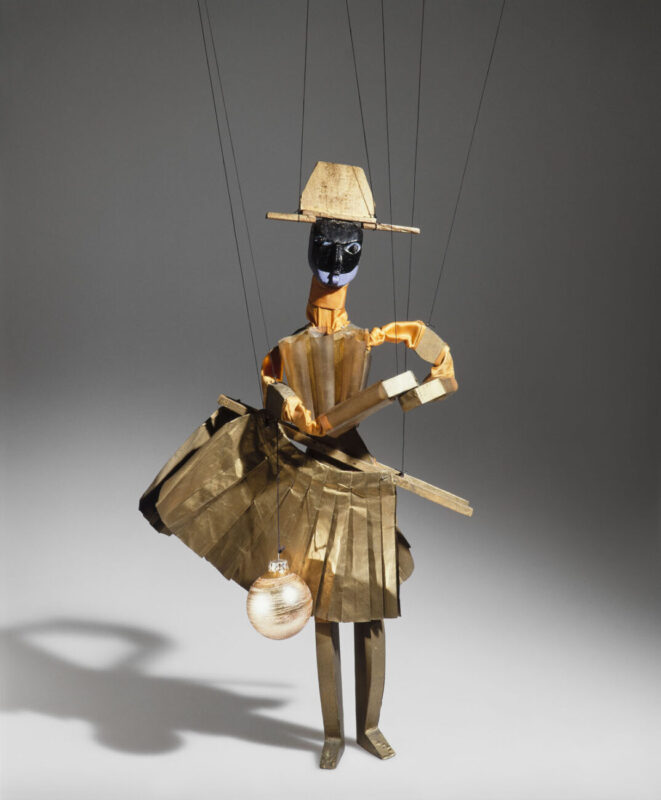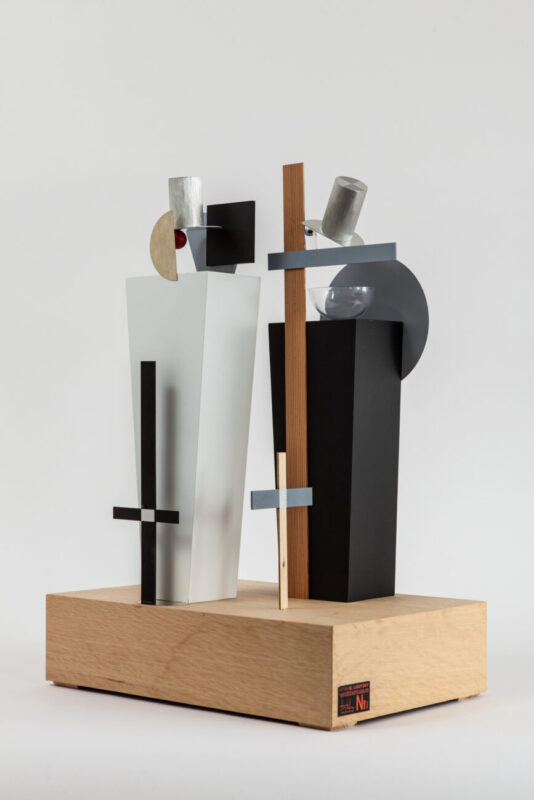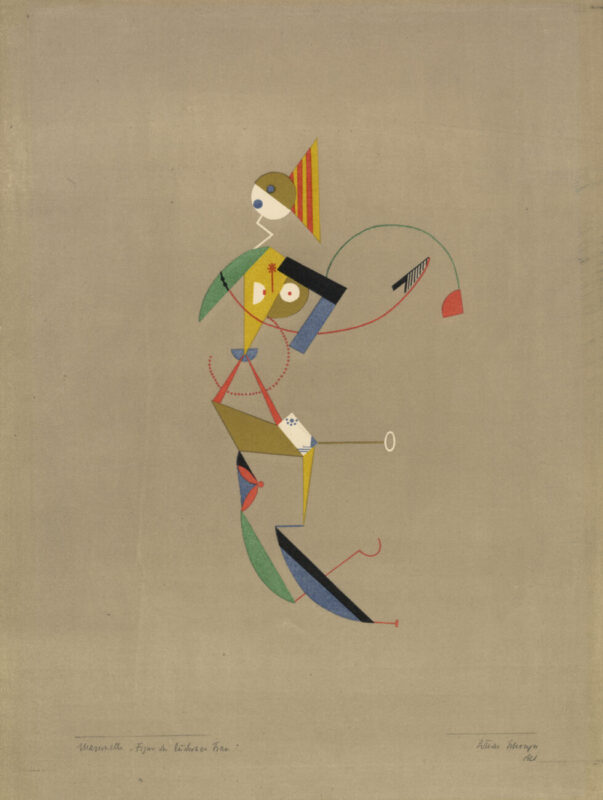Marionettes and artistic avant-garde on show at Reggio Emilia
From November 17, 2023, to March 17, 2024, the Fondazione Palazzo Magnani in Reggio Emilia, Italy, invites art enthusiasts to experience a one-of-a-kind exhibition that has never been seen before in Italy or abroad. Titled “Marionettes and Avant-garde: Picasso, Depero, Klee, Sarzi,” this mesmerizing show promises to captivate visitors with its unique blend of art, theater, and historical significance.
Curated by James Bradburne, a member of the Scientific Committee of the Fondazione Palazzo Magnani, the exhibition revolves around the concept of the “fourth wall.” The fourth wall represents the emotional connection that turns a successful performance into an immersive experience, blurring the line between the stage and the world, art, and life. When a puppet or marionette breaks the fourth wall, it gains the trust of the audience, allowing the performance to dissolve the boundary between reality and the world of the theater.
This groundbreaking exhibition explores the work of artists from both the realms of art and puppetry who have taken marionettes and puppets seriously, recognizing them as more than mere children’s playthings. Instead, they have embraced the creative potential of these forms to seek new modes of visual expression. The notion of the “child” as distinct from the adult has manifested in various ways throughout the 20th century, encouraging artists to utilize puppetry as a source of aesthetic inspiration, fostering creativity in individuals during critical developmental stages.

Upon entering the Palazzo Magnani exhibition, visitors will be greeted by life-sized costumes designed by Pablo Picasso for “Parade,” a choreographic ballet performed by Sergei Diaghilev’s Ballets Russes in Paris in 1917. The exhibition will showcase a myriad of puppets, from the earliest examples like Pulcinella and Harlequin from the Commedia dell’Arte to those created by Otello Sarzi, a Reggio Emilia native, using experimental materials.
Two stages, designed to resemble a puppet booth and a puppet theater, will be set up on the ground floor of the museum. This allows all visitors to engage in “puppet theater” and immerse themselves in the enchanting world of puppetry. Thanks to collaborations with the Carlo Colla Marionette Company of Milan and the 5T Association of Reggio Emilia, a rich program of micro-performances and professional “puppet theater” interpretations will enliven the weekends throughout the exhibition’s duration. Watching these performances, one may ponder the question: “Do marionettes and puppets go to heaven when they ‘die’?” This is a natural query, as these puppetry objects seem to occupy a gray area, straddling the boundary between living creatures and inanimate objects.
Several renowned artists have “appropriated” and experimented with this art form due to its enchanting qualities and inherent ambiguity. Directors have even considered using marionettes as a means to replace actors. The dream of bringing inanimate objects to life and the consequences of their autonomy have fascinated writers and artists from Collodi to Capek. In Italy, artists like the Futurists Enrico Prampolini and Fortunato Depero found in marionettes a unique aesthetic, capturing their abstract and mechanistic qualities. In the aftermath of World War I, they were used to depict the grim reality of returning soldiers who had been amputated and mutilated, as illustrated by Sironi, Carrà, and De Chirico.

Vienna, alongside Berlin, was a European cultural capital during the late 19th century. Vienna became a hotbed of creativity in art, theater, music, philosophy, and science, with influences from Orientalism making the traditional Javanese wayang puppetry a notable presence on European stages. Austrian artist and illustrator Richard Teschner, in particular, elevated stick puppetry to new heights, which had a far-reaching influence on artists from Paris to Moscow. This section is explored in the exhibition, entitled “Dreams of the Far East – Viennese Expressionism.”
Oskar Schlemmer’s rediscovery of Heinrich von Kleist’s classic essay on puppet theater in 1810 resulted in puppets, toys, and children’s games becoming central to the Bauhaus practice in Weimar in the 1920s. Artists such as Paul Klee, Andor Weininger, Lothar Schreyer, Sophie Täuber Arp, and Oskar Schlemmer experimented with puppetry, each making unique contributions to the movement.
The exhibition shifts its focus to the Russian avant-garde with “Puppets and the Revolution.” When Lenin and his wife Natalia Krupskaya set out to combat illiteracy and educate the new Soviet citizen, they recognized that the use of puppets was ideal. Collaborating with prominent artists, architects, and writers, figures such as Natalia Sats, Samuil Marshak, El Lissitzky, Aleksandra Ekster, and Nina Efimova experimented with new forms of children’s theater.

The exhibition concludes with a tribute to Otello Sarzi (1922–2001), thanks to a close collaboration with the Fondazione Famiglia Sarzi. Born into a multi-generational tradition of puppetry, Otello began as a young assistant in his family’s itinerant puppet theater. Over time, he came into contact with leading figures in the Italian art, theater, and film scenes.
In 1957, in Rome, Otello began his creative and innovative work with the “T.S.B.M.” Experimental Puppet and Marionette Theater. He collaborated with important artists and staged plays by Brecht, Garcia Lorca, and Arrabal, using innovative techniques and creating large puppet figures. One such example is the giant paper figure created by Otello Sarzi for Igor Stravinsky’s “Mavra,” performed at the Spoleto Festival in 1984.
Sarzi’s company toured both nationally and internationally and settled in Reggio Emilia in 1969. Frequent collaborations with Italian television ensued, and his ambitious, technically complex performances were characterized by strong cultural engagement and explicit political awareness. In Italy, Otello Sarzi is considered one of the most significant and important figures in post-war puppetry.
“I believe that the main objective of the exhibition is to create a space of imagination where a stick can once again become a horse, a dragon, or a flute,” remarks James Bradburne, the exhibition’s scientific coordinator.
Giorgio Zanni, President of the Province of Reggio Emilia, adds, “This absolutely unique proposal represents another significant achievement for Palazzo Magnani, reflecting not only artistic quality but also great attention to two distinctive traits of our community: the ingenuity and creativity of




